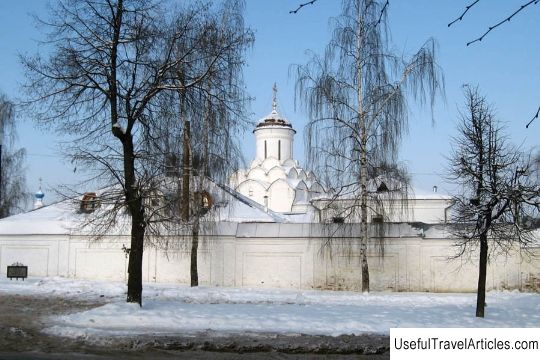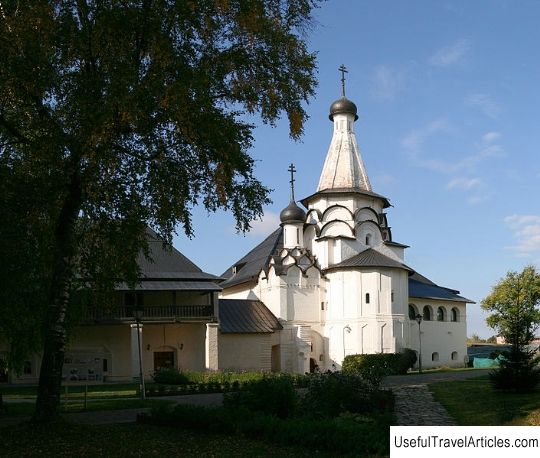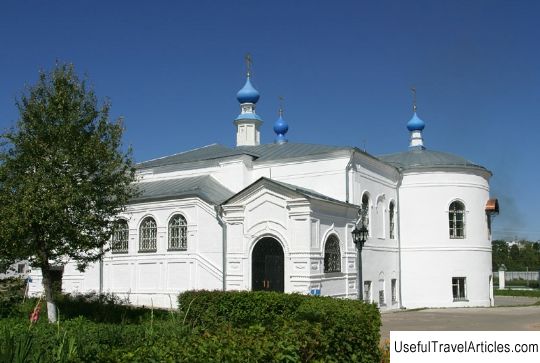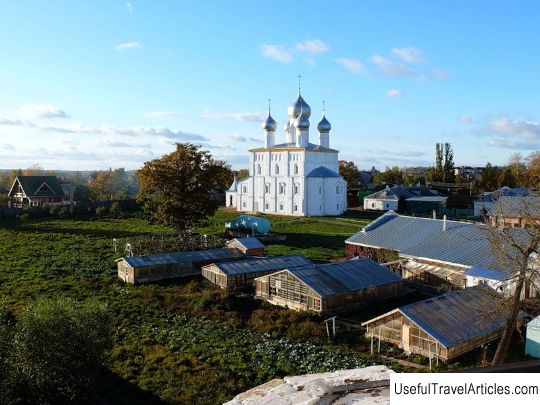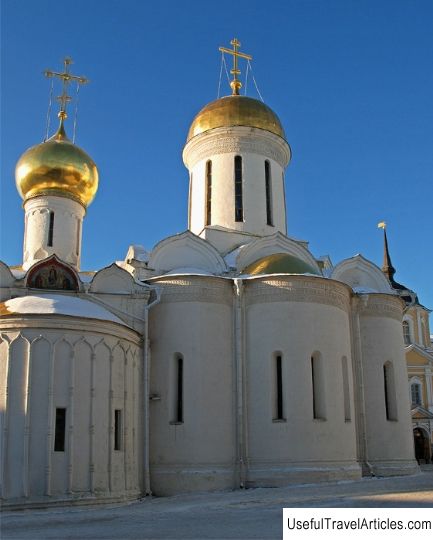Cathedral of the Dormition of the Princess of the Monastery description and photos - Russia - Golden Ring: Vladimir
Rating: 8,7/10 (789 votes) 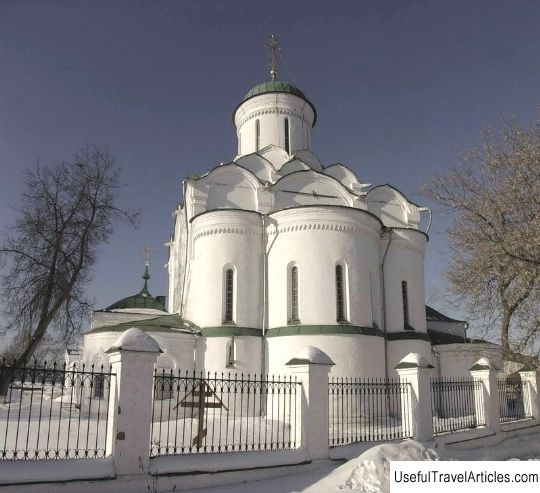
Cathedral of the Dormition of the Princess of the Monastery description and photos - Russia - Golden Ring: Vladimir. Detailed information about the attraction. Description, photos and a map showing the nearest significant objects. Photo and descriptionIn 1200-1201, the Assumption Cathedral was built in the center of the courtyard of the Knyagin monastery. The building has not survived, and the current temple was erected on the site of the ancient one at the turn of the XV-XVI centuries. During construction, the remaining parts of the walls of the old building were used. The modern Assumption Cathedral is a large brick church with 2 aisles, a gallery and a massive dome. The outer walls are completed by zakomars, above which there are 2 tiers of keeled kokoshniks, which have become the base for the light drum. In the lower area of the cathedral you can see the border of the transition from the old walls of the ancient temple to the later part. The old brick was thin, made from a mixture of mortar and brick chips. The cathedral was entered through portals, and during excavations, colored majolica tiles were found, with the help of which the floor in the ancient cathedral was laid. Chroniclers testify that Princess Maria, who founded the monastery, her sister Anna and daughters of Prince Alexander Nevsky were buried within the walls of the temple in the XIII century. The tombs are located in the outer walls of the side facades. This testifies to the fact that in ancient times, chapels-tombs adjoined the eastern corners of the building. The decoration of the temple is a reminder of its ancient predecessor, cross-shaped pillars, semicircles of apses and a small arcosolium in the northern wall. However, the character of the current interior bears the imprint of the border of the XV-XVI centuries. The space of the cathedral is filled with light and spaciousness, the boundless smoothness of the walls creates the impression of a solid space. The arches on which the dome is installed are located in steps in relation to the vaults of the side aisles. This is an even better condition for lighting through the drum windows. Researchers suggest that the builders still tried to reproduce the appearance of the ancient temple, since the features of this building can be traced in the structures of pre-Mongol Rus. The walls of the temple are entirely covered with fresco painting, which was cleared by restorers already in the Soviet period. The painting was made in the middle of the 17th century by order of the Russian Patriarch Joseph. Artists from Moscow worked in the cathedral under the guidance of the famous master Mark Matveyev. In the vault of the altar apse is one of the largest compositions of painting. It reflects a plot that reveals the main sacrament - the transformation of wine and bread into the blood and flesh of the Savior. Holy gifts are carried by angels. Probably, for this reason, the incredible amount of colorful images gave the composition the name of the Great Exit. To the right and left of the apse wall is a composition on the subject of the Communion of the Apostles by Christ. On the front plane of the altar arch there is a fresco representing a huge picture of the Assumption of the Virgin. The story of the deeds of the Virgin is continued in the painting on the south wall of the cathedral. It is represented by a complex of symbolic images of miracles that are associated with the life path and the posthumous appearances of the Virgin. Scientists noted the presence in the painting of the cathedral walls of images of Vladimir princes, including Andrei Bogolyubsky. In the corner vaults of the cross, there are large images of Christ, hosts and Mother of God. But the most vivid impression is made by the scene of the Last Judgment, located on the western wall of the temple. It is beautifully done. The artists were able to successfully overcome the complexity of the plot and create a clear, multi-component composition, understandable to the viewer. The composition uses cherry-red, purple-violet, greenish-blue and golden tones. The shapes of the images are refined, real and fantastic creatures look graceful and fragile. The celestials and humans are somewhat alarmed. Being in harmony with the interior of the cathedral, the painting gives a joyful mood, despite the gloomy nature of the plot.          We also recommend reading Church of Gregory the Theologian of the Rostov Kremlin description and photos - Russia - Golden Ring: Rostov the Great Topic: Cathedral of the Dormition of the Princess of the Monastery description and photos - Russia - Golden Ring: Vladimir. |
